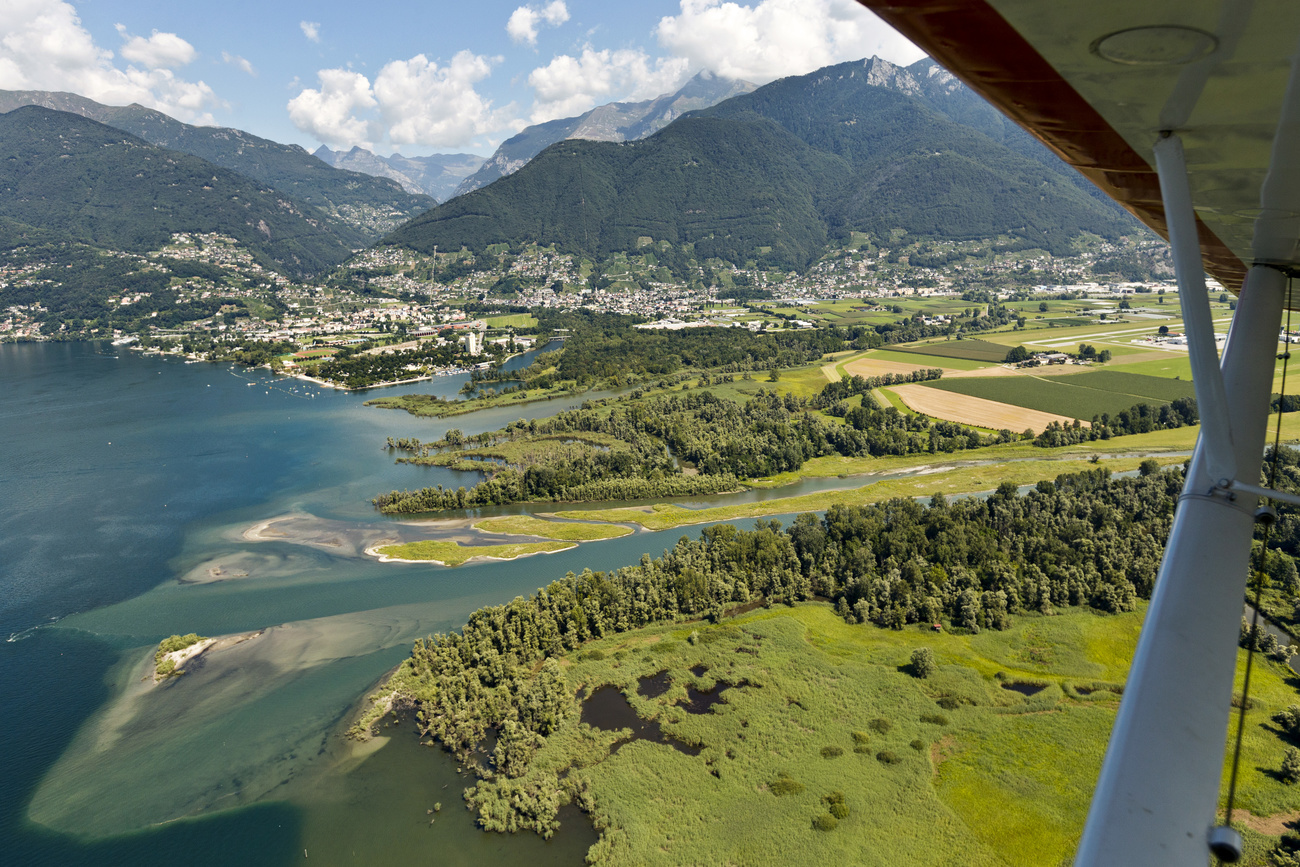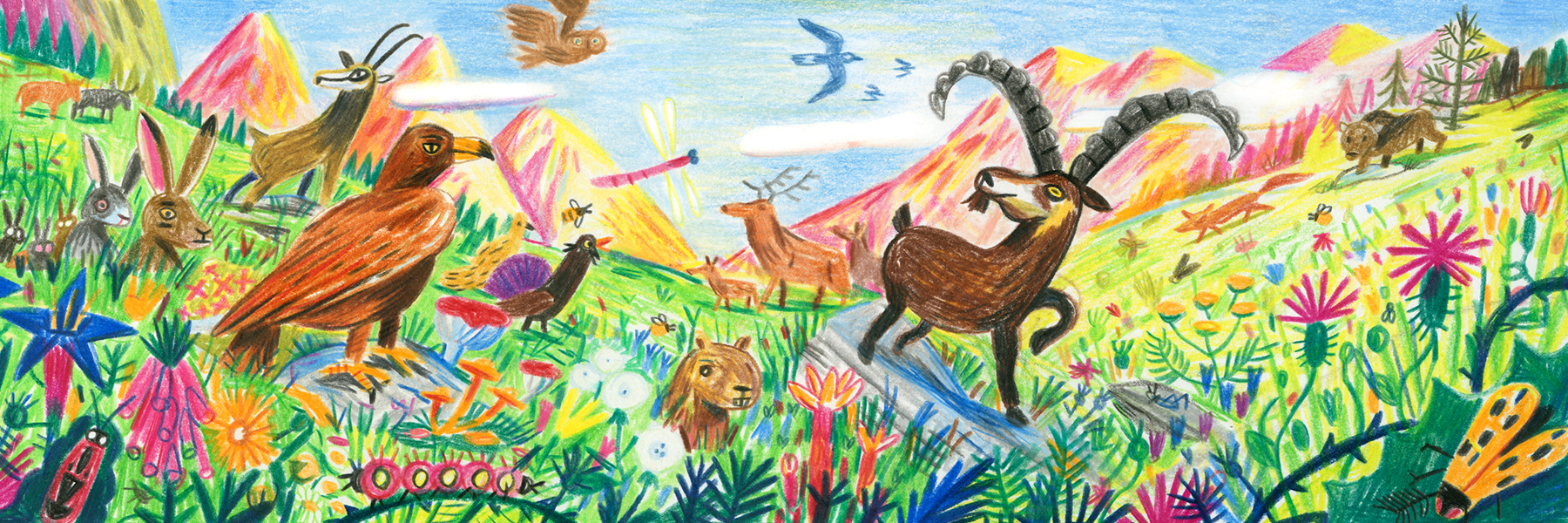Protecting biodiversity starts in the community
Amid faltering global negotiations on protecting biodiversity that were stalled by the Covid-19 pandemic, a researcher who has studied humans’ impact on nature around the world argues there is hope to be found in local initiatives.
This March in Geneva, 195 countries discussed the next global framework for biodiversity. Due to the Covid-19 pandemic, negotiations have been in limbo for over two years. The last global biodiversity agreement, known as the Aichi Biodiversity TargetsExternal link, expired at the end of 2020 and a new Biodiversity Framework is needed to replace them. But in Geneva, participants failed to produce any concrete targets to move forward, nor even agree to overall objectives for the next framework. Another negotiating meeting is slated for July in NairobiExternal link, Kenya, ahead of the UN Biodiversity Summit that will take place in Montreal, Canada this December. But the process has been characterised by a lack of urgency, according to many NGOs present at the Geneva negotiations.
Threats to nature continue
The pandemic halted efforts to manage biodiversity in many places, and the global threats to nature continued largely unabated. Although the early days of the pandemic brought news of dolphins and swans returning to over-trafficked waterways and mobility was greatly restricted because of pandemic response strategies, consumption and land use patterns have hardly changed — with the impacts on nature all too clear. And as weeks of lockdowns dragged into months, it became clear that humanity’s response to the pandemic was itself harming nature.
As highlighted by Conservation International,External link “There is a misperception that nature is ‘getting a break’ from humans during the Covid-19 pandemic. Instead, many rural areas in the tropics are facing increased pressure from land grabbing, deforestation, illegal mining and wildlife poaching.”
The situation in developed countries is even more insidious. The amount of plastic waste resulting from sanitation has skyrocketed and the consequent plastic pollution has spiked in many countries in Europe and the Americas, which had been trying to phase out plastics use. And in developed world, people fleeing cities out of fear or simply to enjoy remote work is driving demand for resources and energy-intensive single-family homes in suburban or rural areas.
Overall, there were some positive developments for biodiversity conservation as a result of the pandemic, including greater attention to the regulation of wildlife trade, but researchers around the world noticed many more negative impacts.
More
Reason for hope
A target of protecting 30% of the world’s ecosystems by 2030 has been discussed ahead of the upcoming biodiversity summit in Montreal. If this is to be achieved, it demands not only a return to pre-pandemic levels of aspiration but going well beyond them. While this might sound daunting after two years of little progress, we should remember that the actual work of implementation takes place in local communities. There are already a great deal of successful practices and initiatives for biodiversity under way in diverse settings around the world.

More
Key Swiss sanctuary reveals challenges, opportunities in biodiversity protection
The Regional Centres of Expertise (RCE) is one example. There are 175 RCEs across the globe, each one bringing together local stakeholders to advance education for sustainable development (ESD). These RCEs join formal education providers (such as schools and universities) with non-formal education providers (such as city governments, national parks, museums, and zoos) to use education and training to promote an integrated sustainable development agenda in a given region.
Launched in 2003, the RCEs initiative is facilitated by the United Nations University Institute for the Advanced Study of Sustainability (UNU-IAS) in Tokyo, and funded support by the Ministry of the Environment of Japan.
The protection and restoration of the biosphere has been focal point for the RCEs since their inception. The recent publication Engaging Communities for Biodiversity Conservation: Education for Sustainable Development Projects from the Global RCE NetworkExternal link highlights successful cases such as the restoration of mangrove ecosystems in Bangladesh and the Philippines or the reduction of human-wildlife contact in Brazilian and Kenyan communities. The publication provides many other concrete examples of how communities around the globe have used education as a mechanism for taking concrete action to protect biodiversity within their region. Whether taking an ecosystem or a species-focused approach to conservation, the featured RCE projects offer next steps that we can all take in our own communities to translate education into action for protecting the biosphere.
Clearly, we will need global goals and targets going forward as we look to protect nature around the world. But through these examples, where communities have been able to take agency in using education and training to implement biodiversity conservation, we are that much closer to making these elusive global goals a reality.

More
The Swiss Alps are beautiful, but are they biodiverse?

In compliance with the JTI standards
More: SWI swissinfo.ch certified by the Journalism Trust Initiative









You can find an overview of ongoing debates with our journalists here . Please join us!
If you want to start a conversation about a topic raised in this article or want to report factual errors, email us at english@swissinfo.ch.